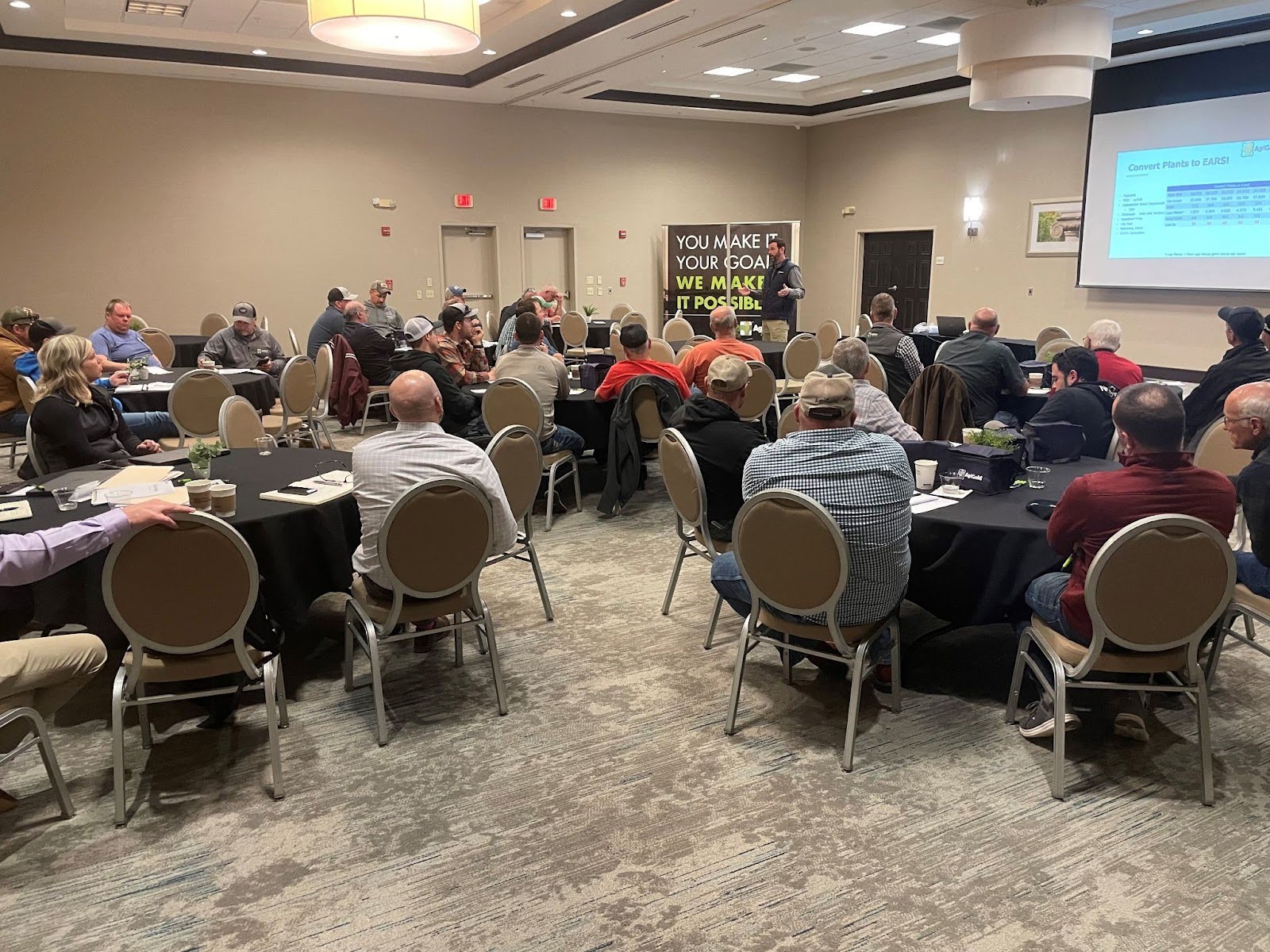TISSUE SAMPLING BUILDS COMMUNITIES OF HIGH-YIELDING FARMERS
Key Takeaways:
- Tissue sampling offers real-time insights into crop nutrient levels.
- This data helps farmers optimize fertilization strategies, improve nutrient application efficiency and reduce costs.
- Farmers who prioritize ongoing learning about the latest agricultural practices and innovations can achieve superior crop outcomes.
“Many farmers aren’t content with the status quo, and they’re willing to do more and learn more about raising the best crop possible,” says AgriGold® agronomist Scott Bugg.
That willingness to do and know more led a handful of Ohio farmers to participate in a season-long tissue sampling program to fine-tune their crop fertility. Today, nearly 40 growers are participating in the project, with support from their local AgriGold agronomy teams.
YIELD STARTS FROM THE GROUND UP
It’s been estimated that soil fertility accounts for up to 60% of a crop’s yield. Without proper nutrients, plants can’t thrive. But fertilizer is also one of a farm’s largest expenses — so it pays to apply only what the crop needs and nothing more. Is it possible to get the fertility balance just right? Bugg thinks so.
He says that taking in-season tissue samples is one way to ensure crops don’t have a hidden hunger that could limit yield potential. Often, nutrient deficiencies aren’t visible until it is too late to limit yield loss. Tissue sampling can also ensure the crop isn’t overfertilized, so farmers can avoid wasted dollars.
“Soil samples are a great starting point for managing crop fertility, but tissue sampling gives a real-time snapshot of the nutrition crops are receiving,” Bugg explains. “A tissue sample can help the farmer understand if they’re using the right nutrient source and optimizing the application timing or if other factors, such as drought or root damage, may be limiting nutrient availability to the plant.”
In addition, soil test interpretations may not be as reliable as tissue tests for assessing the sufficiency of nitrogen, sulfur and micronutrients, including iron, zinc, manganese, boron and copper.
MATCHING FERTILITY WITH CROP NEEDS
Bugg’s tissue sampling project involves taking samples at six key growing points throughout the year for corn and soybean crops. The project began in 2016, and since then, the AgriGold agronomy team has collected and analyzed thousands of data points.
“The data we have generated through this project helps us understand what nutrient values a plant needs at different times throughout the year to meet specific yield levels,” Bugg says. “We’ve found that higher nutrient levels within the plants typically equate to a higher yield at the end of the year.”
Bugg equips his farmers with the tools to collect and submit tissue samples throughout the season. After the lab reports the crop’s nutrient profile, he helps his farmers identify gaps in their fertility program and develop a strategy to overcome them. “Some farmers who have really taken off with tissue sampling have changed their production systems because of it,” he explains.

AgriGold agronomist Josh Johnston shares tissue sampling data with farmers who participated in the project.
DATA DRIVES BETTER NUTRIENT USE EFFICIENCY
Over the past four decades in the U.S., nutrient use efficiency for nitrogen, phosphorus and potassium (NPK) in corn has steadily increased. More robust datasets and precision agriculture likely helped contribute to those increases.
Bugg says growers who invest time in tissue sampling throughout the season can use the data to identify trends and enhance their fertility decisions.
“Some farmers I’ve been talking to are going to try some new practices this season,” he says. “They’re not afraid to push the envelope with different products to get the nutrients into the plant better. They might change their planter setups when applying their products or switch up how they apply them. The tissue sampling data definitely helps validate and support those decisions.”
NOT ALL HYBRIDS RESPOND THE SAME
AgriGold continues to do hybrid-specific research on nitrogen management in corn and has found that each hybrid responds differently to nitrogen application timing. For example, some hybrids are more responsive to early nitrogen applications, while others prefer late-season applications. Using that information, along with tissue sampling data, can help optimize nitrogen application timings in corn to boost yield and return on investment.
“The more you know, the more you can do with that information,” Bugg says. “If you just go out there and plant and hope for the best, you won’t get too far. When you see somebody completely change their operation and how they’ve been farming their whole lives based on tissue sampling data, it’s a neat thing to be part of. It’s great to see farmers taking the initiative to learn more to advance their operations.”
If you’re interested in participating in AgriGold’s tissue sampling project, contact your local AgriGold agronomist.



